The COVID-19 pet rush has ended in Miami-Dade, and the shelter is crowded again
Trisha, the brown boxer mix leaning on a visitor’s leg to solicit more scratches, holds an unwelcome record in Miami-Dade County.
She’s been at the county pet shelter the longest of any animal, a 196-day stay that’s part of a discouraging return to pre-pandemic routines when it comes to homeless dogs and cats.
Following higher demand for new pets after the COVID-19 pandemic began in the spring of 2020, the county’s Animal Services Department reports a growing population of dogs and cats at its Doral shelter, which is nearing record capacity.
Much of the problem rests with larger dogs like Trisha, a 4-year-old weighing about 50 pounds who was found as a stray in May.
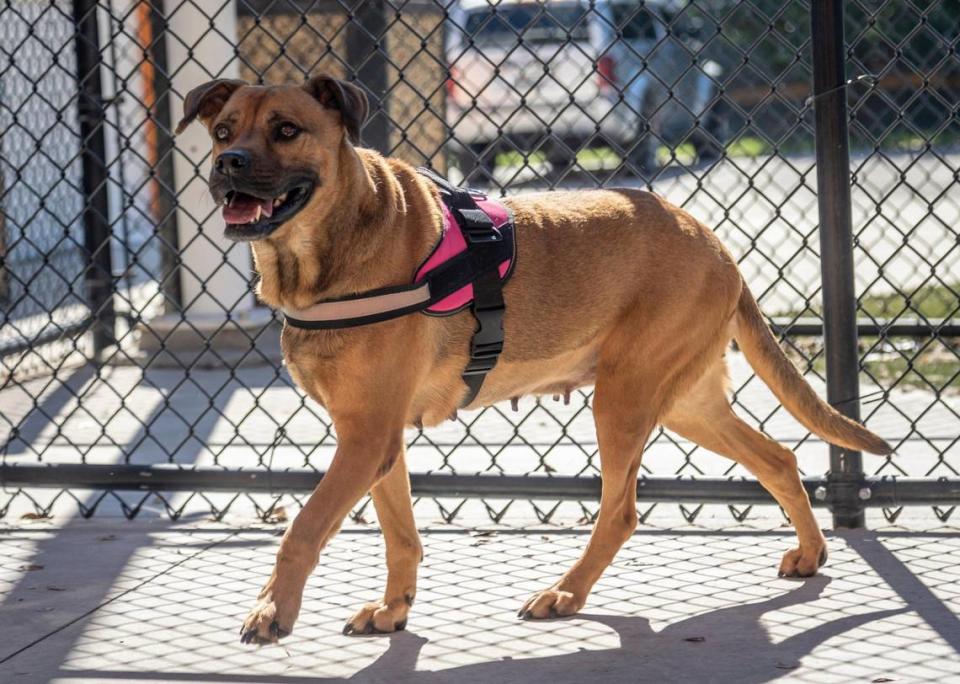
While terriers and other lap dogs remain in high demand, adoptions of medium and large dogs aren’t keeping pace with arrivals. The shelter’s dog population is up more than 200% over a year ago, with nearly 400 canines living there in November compared to fewer than 125 in November 2020.
“During the pandemic, a lot of people said: ‘Oh, I want a pet. I have time,’ ” said Marcela Garcia Bonini, a Miami dog trainer who visits the shelter three times a week as a volunteer dog walker. “But nobody thought the pandemic was going to be over, and people would go back to normal life.”
Surge in shelter animals over summer
Shelter managers saw the intake numbers grow significantly over the summer, when the population count crossed the 200 mark for the first time since the pandemic began.
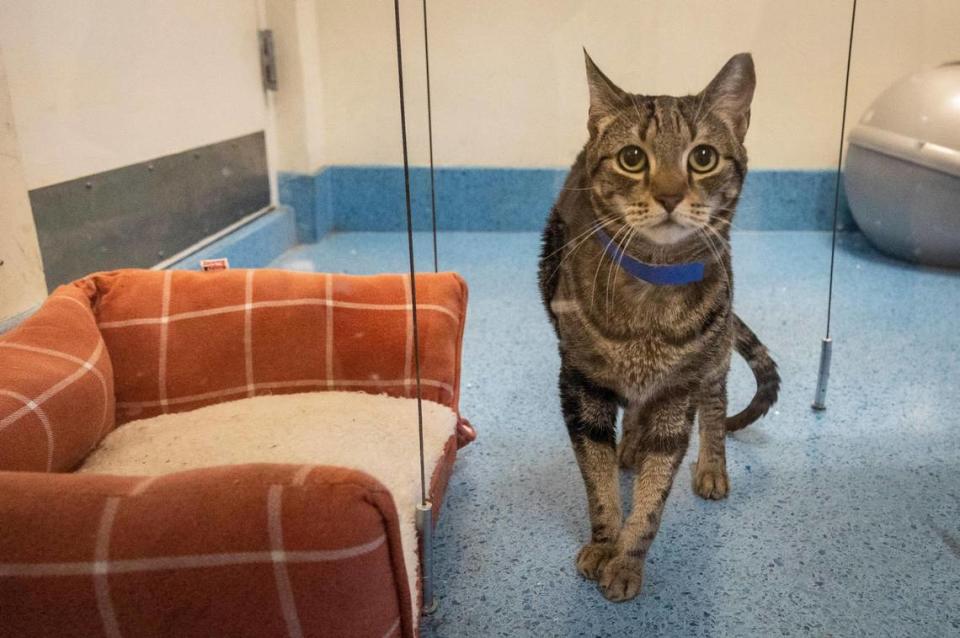
Extra interest in pets during work-from-home precautions gets some of the credit for the briefly reduced shelter population. But adoptions from the shelter actually dropped in the 2020 budget year, which includes the first six months of the pandemic.
The pandemic also upended the normal routines that bring dogs and cats into the shelter, with fewer strays spotted at a time of COVID curfews, reduced shopping trips and fewer commutes.
Animal Services also cut back on stray animal pickups at the start of the pandemic, and discouraged the public from turning in pets at the shelter. That included urging residents in April 2020 to keep stray dogs they found instead of turning to the county to care for them.
Overall intake dropped 6.9% in 2020 to about 27,000 dogs and cats. Now, homeless pet arrivals are projected to be up nearly 18% in 2021 to 32,400, according to figures released with the 2022 budget for Animal Services.
That spike in new dogs and cats defied forecasts for a smaller increase as the pandemic effect waned. For cats, the county relies on a release program where the shelter sterilizes stray cats and then returns them to where they were found. Miami-Dade expects to process about 12,000 cats in the program this year.
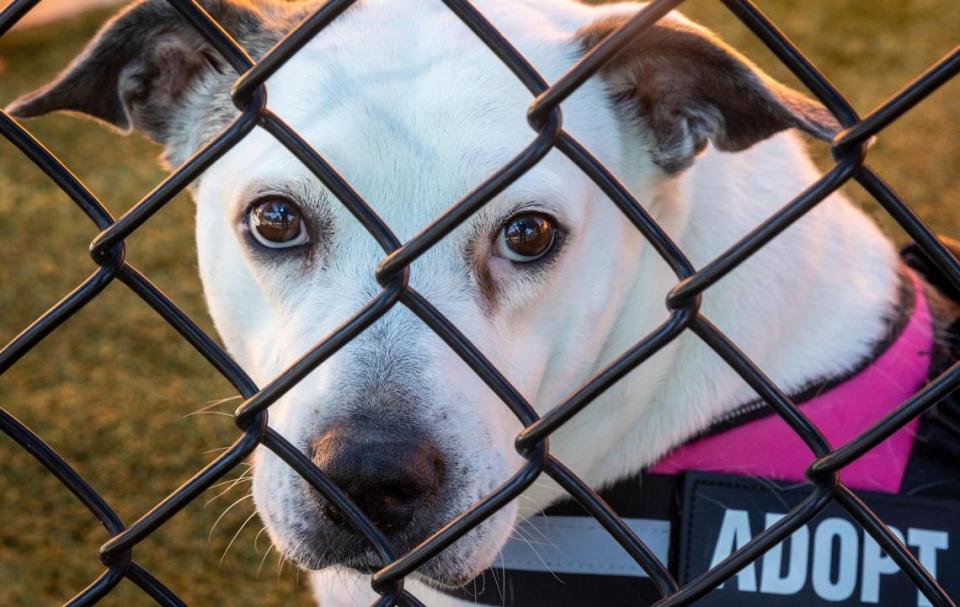
Dogs aren’t released, leaving shelter staff to care for them or find the canines other homes. Miami-Dade’s policy is not euthanize animals for space, and the county expects to report a 94% survival rate this year for dogs and cats taken in as strays or surrendered by owners.
For Michael Rosenberg, a leading critic of Miami-Dade’s approach to animal services, the current surge in the shelter population reflects a long-term failure by the county. He’s a founder of the Pets Trust advocacy group, which led a successful 2012 ballot item endorsing a higher property tax to fund pet sterilization efforts and education efforts countywide under a board separate from Animal Services.
The referendum passed with 65% of the vote but wasn’t binding, and county commissioners — including Mayor Daniella Levine Cava, who served on the board between 2014 and 2020 — approved more funding for Animal Services but not the dedicated tax rate Pets Trust wanted.
Pets Trust figures show Animal Services’ budget increased nearly 250 percent since 2012 to $32 million, and sterilizations by the agency are up nearly 90% as well to roughly 25,000 per year. But the yearly intake of animals stayed mostly flat at roughly 30,000 a year before the pandemic, though the figure is projected to climb for the budget year that ends Sept. 30, 2022.
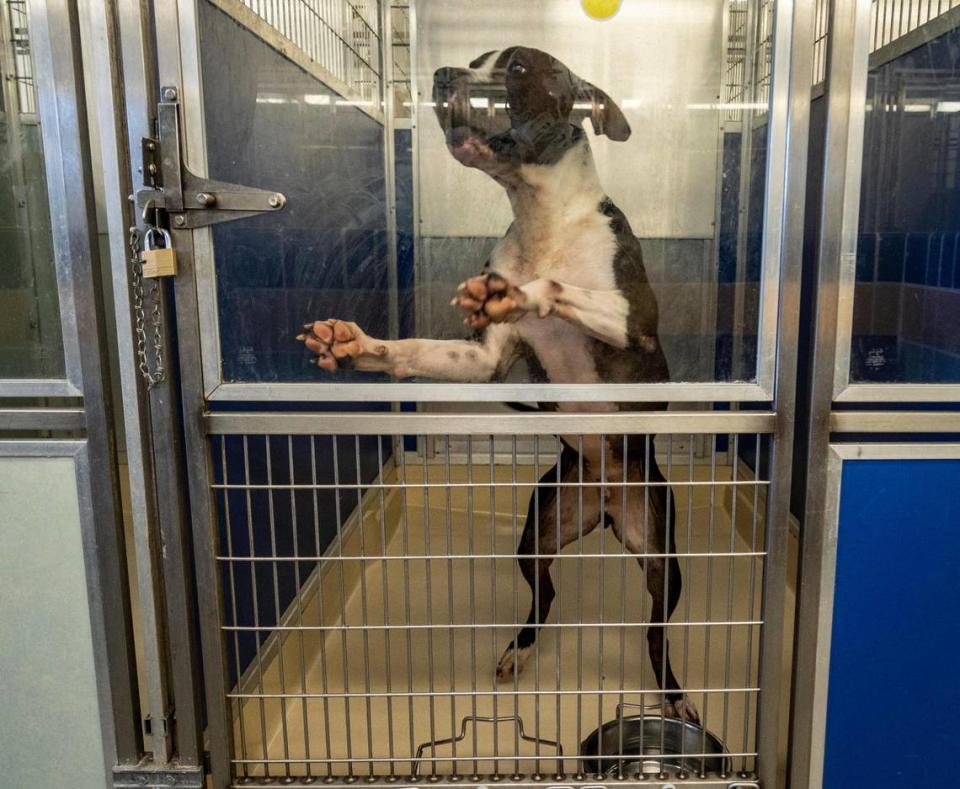
“The Pets Trust plan called for 120,000 spay-or-neuter surgeries a year, and the funding was there to do it,” Rosenberg said. “We wanted to get ahead of the problem and not always play catch-up.”
Large dogs in need of homes
As 2022 approaches, Animal Services is bracing for record population levels in its $15 million Doral shelter that opened in 2016.
To clear some space, the county agency is ramping up efforts to find large dogs other homes.
One avenue leans on the county’s foster volunteers, where residents agree to temporarily take in dogs or cats that remain available to the public for adoption.
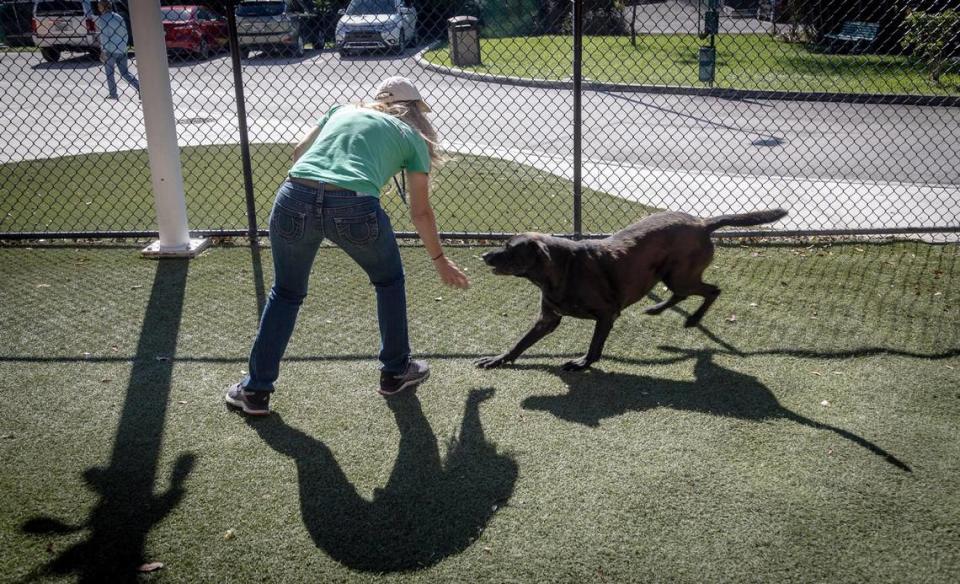
Animal Services recently offered gift cards for foster volunteers willing to take in extra dogs. Bronwyn Stanford, the new Animal Services director recently hired by Levine Cava, is pitching the holidays as a good time for families to take in a foster dog for a few weeks.
“We’d love people to take some dogs just for the holidays,” Stanford said. “Just to give them a break from the shelter.”
Shipping dogs elsewhere is a strategy reserved for the hardest dogs to adopt. Miami-Dade transported nearly 700 dogs north in 2019, but only about 360 last year, according to budget figures. For 2022, the target is more than 700 transports.
A nonprofit rescue group backing Animal Services recently funded an airlift of dogs out of the shelter and to a rescue farm in Canada. The flight by the nonprofit, Wings of Rescue, cost about $34,000, said Yolanda Berkowitz, president of Friends of Miami Animals, which sponsored the transportation, along with private donors.
The plane shipped 54 dogs to Ontario’s Dog Tales farm. Berkowitz said that kind of expense is rare, but that she didn’t want Miami-Dade to miss out on a flight as the shelter population grows.
“It’s a reflection of them having so many big dogs at the shelter,” she said.
Flora Beal, public information officer at Animal Services, said the flight removed some dogs that had arrived earlier than May 2021. Those transports left Trisha the boxer as the shelter’s longest-running resident.
“If it had not been for that flight, you’d have another pet named Rocco who was here 190 days,” Beal said.
Trisha lives in the kind of county pen that was once double the size, when shelter managers had enough extra space to leave the back panel up and allow a dog to occupy both cages. Now the shelter needs both pens, in an area where dozens of dogs live when not being walked by county staff and volunteers or visiting with potential owners.
Beal clipped a leash onto the harness another staffer attached to Trisha. Then Beal, Trisha and two visitors walked to the system of mini dog parks outside the shelter — a collection of benches and artificial grass enclosed by outdoor fencing where dogs can be let off the leash.
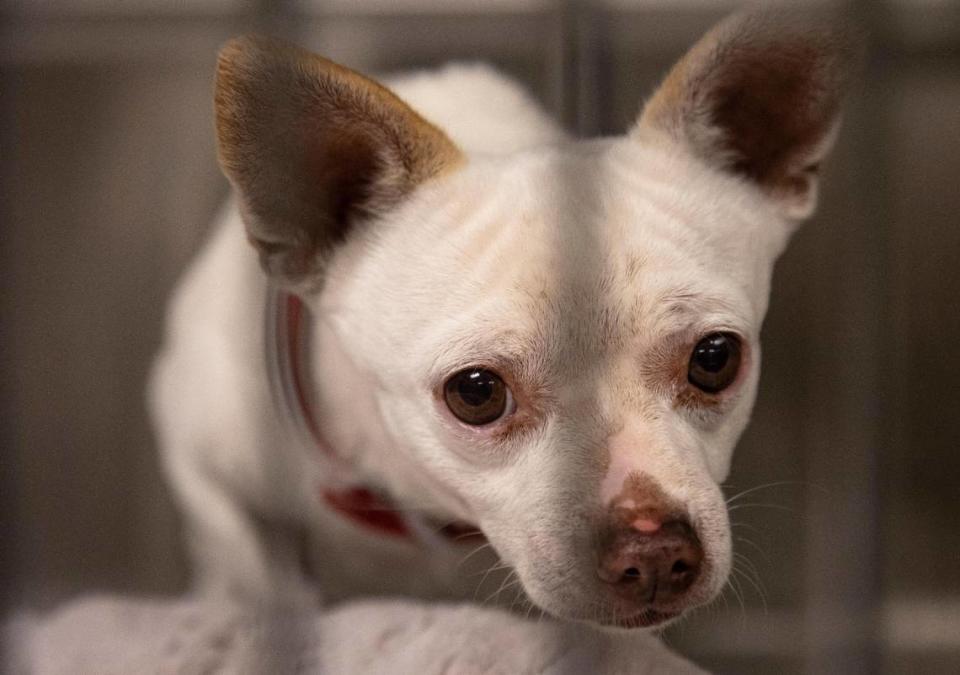
“You can tell she’s good on a leash” Beal said as Trisha walked ahead at a leisurely pace. “She’s not pulling. That’s always a good thing.”
Trisha ignored the sounds of barks from other dogs in the area, and had to be cajoled into eating a treat Beal offered. Instead, the boxer seemed to prefer sitting by whichever human opted to take a seat on the bench, a hint that scratches might be available.
“She’s a very well-adjusted pet,” Beal said as Trisha sat next to a visitor, looking out at the shelter parking lot through the fencing. “She just wants that human interaction, that human affection.”
Adopting a pet
Miami-Dade Pet Adoption and Protection Center
3599 NW 79th Ave., Doral, FL 33122
305-884-1101

